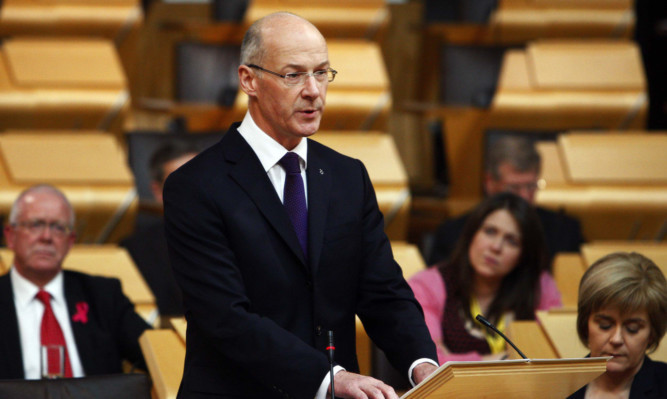John Swinney delivered a boost for first-time home owners but experts warned of a rush at the top end of the property market before heavier taxes come into force.
Under the first land tax rates set in Scotland in centuries, a buyer paying up to £130,000 for their first house will not be hit by any tax, the Finance Secretary announced.
Comparing the rates of the new land and buildings transaction tax (LBTT) against the current stamp duty, people will start to lose out when purchasing property worth more than £325,000.
“In exercising its first judgments on national taxes, this Government has put fairness, equity and the ability to pay at the heart of what it has done,” the Perth and North Perthshire MSP said.
“That is the benefit of putting decisions about Scotland’s future in Scotland’s hands.
“As a consequence of our proposals, a first-time buyer purchasing a house at £130,000 will pay no tax; a young couple buying a flat at £140,000 will save £1,300, paying only £100 in tax; and a family buying a home at £260,000 will save £4,500 on their tax bill.”
The SNP administration’s “progressive approach” to property tax “is more closely aligned to the ability to pay”, Mr Swinney added.
In what was being described as a lurch to the left, the threshold for paying the tax will be increased from £125,000 to £135,000, with a rate of 2% on the proportion of the transaction between £135,000 and £250,000.
A 10% tax rate has been set on properties between £250,000 and £1 million, and properties worth more than £1 million will have a 12% rate.
Susannah Simpson, stamp tax specialist at PwC, said the draft budget would be “welcome news” for first-time buyers.
However, she added: “For residential properties valued above £325,000, the picture is much less rosy.
“The amount of LBTT payable could be significantly higher than under the SDLT regime and this may have a negative impact on house prices at the top end of the market, particularly in areas of Scotland where average house prices rival those of London, such as parts of Aberdeen.”
Conservative finance spokesman Gavin Brown attacked the “eye watering” 10% tax rate set on properties above £250,000 under the land and buildings transaction tax.
He said: “This is an assault on aspiration. At a time John Swinney could have been easing the burden on hardworking families he did the exact opposite.”
Elsewhere, the Finance Secretary announced £390 million will be spent in 2015-16 to provide 6,000 new affordable homes, with an extra £125m to further support the housing sector.
